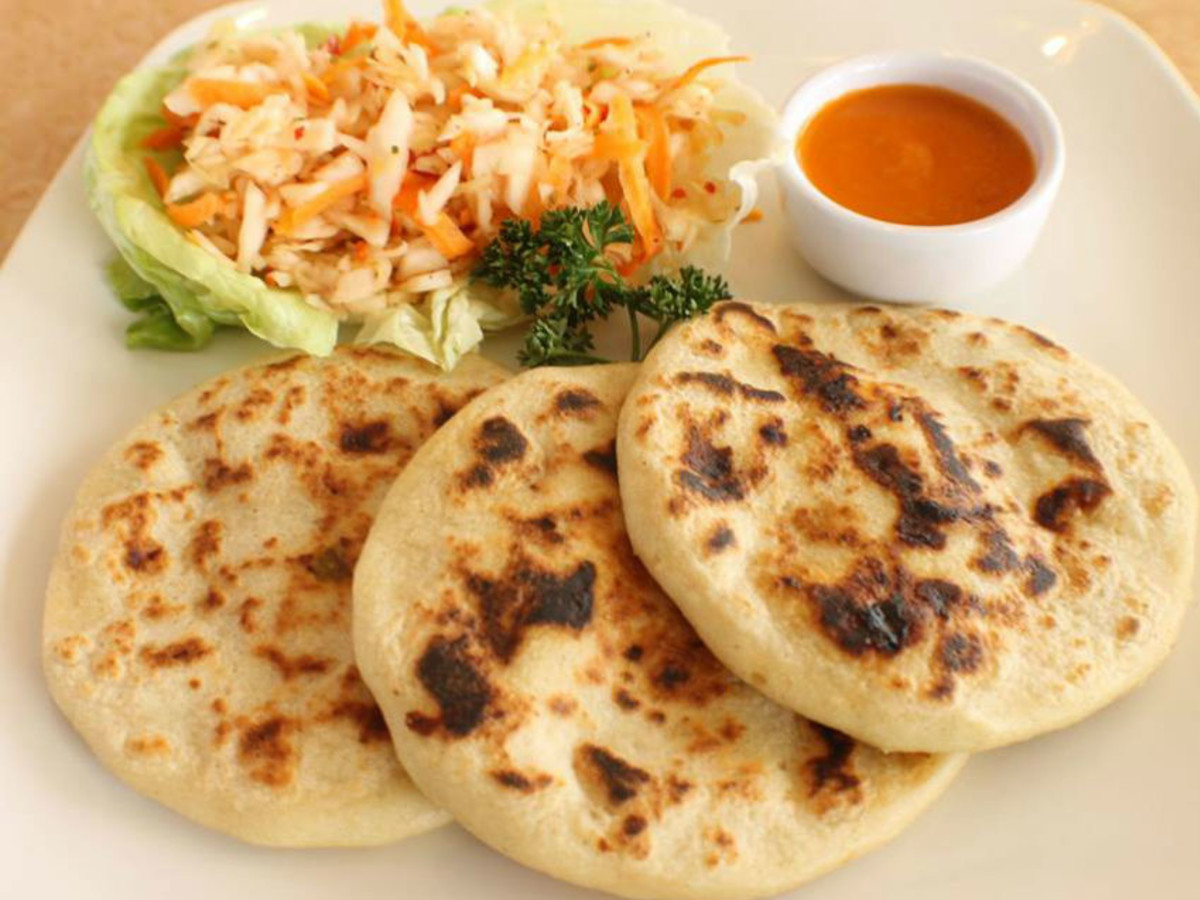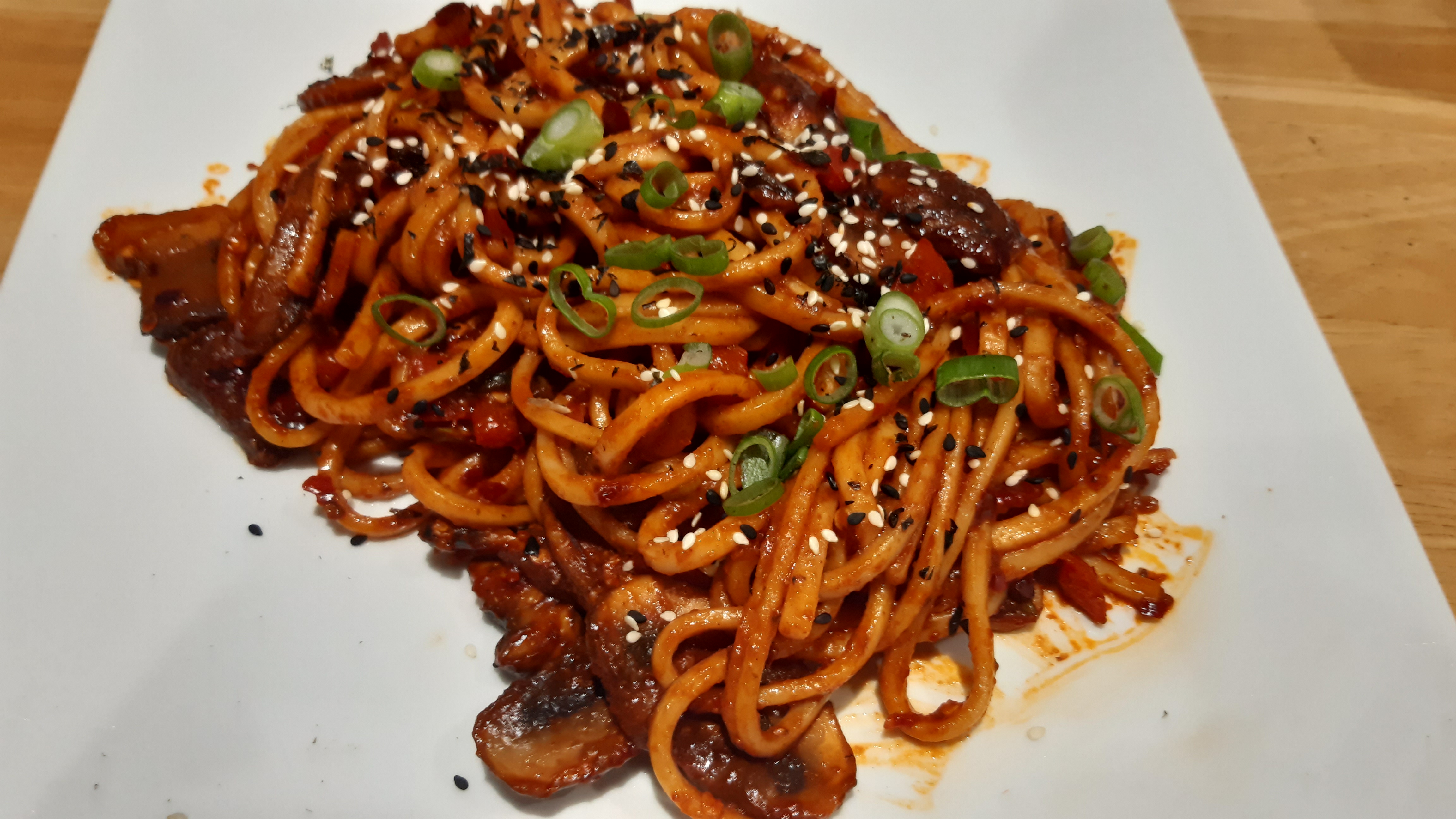The picture above shows a Yemeni sesame oil seller working at an oil mill in Hajjah Province, Yemen, Jan. 19, 2020
Sesame oil is a cooking oil made from sesame seeds that's popular in Asian cooking.
The most popular species of sesame, Sesamum indicum, is considered one of the oldest oilseed crops to have been domesticated and cultivated by humans. It is grown in fields, reaching heights of up to 1.5 m. Sesame flowers may have different colors, such as white, blue, or purple, and a single plant can yield approximately 80 seeds rich in unsaturated fatty acids.
There are a few varieties made with pressed plain seeds or toasted seeds, and they are used in different ways in Chinese, Japanese, South Indian, and Middle Eastern cuisine. Light sesame oil is typically used as a neutral cooking oil, while toasted sesame oil is used as a flavoring in sauces, soups, and other dishes.
Toasted sesame oil is also known as dark, black, or Asian sesame oil. The light brown to dark reddish-brown oil is made with toasted sesame seeds and has a strong aroma and flavor. A little goes a long way; sesame oil is often used as a finishing oil, adding nutty, toasty flavor to a hot or cold dish.
Typically, the darker the toasted sesame oil, the stronger the flavor. Light sesame oil, also called white or plain sesame oil, is light in color. It's made using raw sesame seeds, resulting in high-heat, low-flavor oil.
Cold-pressed sesame oil is made without the use of heat or chemicals. It's prized for its purity and can be found in health food stores. Blended oils are also available, combining toasted sesame oil with other oils. The result is a cheaper option with a less intense flavor.
Historically, sesame was cultivated more than 5000 years ago as a drought-tolerant crop which was able to grow where other crops failed. Sesame seeds were one of the first crops processed for oil as well as one of the earliest condiments. Sesame was cultivated during the Indus Valley civilization and was the main oil crop. It was probably exported to Mesopotamia around 2500 BCE. An was historically consumed in many socieites in Europe and Asia including Ancient Egypt where it was used as medicine, for cooking, for its fragrance and for lamp fuel.
Tanzania remains the largest producer of sesame oil (followed by Myanmar/Burma, China, India, Japan, South Sudan, and Sudan) and also dominates the global consumption of this product . The market for sesame oil is mainly located in Asia and the Middle East, where the use of domestically-produced sesame oil has been a tradition for centuries.
Sesame oil is most popular in continental Asia, especially in East Asia and the South Indian states of Karnataka, Andhra Pradesh, and Tamil Nadu, where its widespread use is similar to that of olive oil in the Mediterranean.
Here is a video from eater .com showing modern sesame oil in the ROK https://www.youtube.com/watch?v=m6yn7MCwzPg
And here is a video of tradtional oil production using a mill and oxen (CW: animal labor) https://www.youtube.com/watch?v=N2xZXufObW8
Megathreads and spaces to hang out:
- ❤️ Come listen to music and Watch movies with your fellow Hexbears nerd, in Cy.tube
- 💖 Come talk in the New Monthly queer thread
- 💛 Read about a current topic in the news
- ⭐️ October Movie Nominations ⭐️
reminders:
- 💚 You nerds can join specific comms to see posts about all sorts of topics
- 💙 Hexbear’s algorithm prioritizes struggle sessions over upbears
- 💜 Sorting by new you nerd
- 🌈 If you ever want to make your own megathread, you can go here nerd
- 🐶 Join the unofficial Hexbear-adjacent Mastodon instance toots.matapacos.dog
Links To Resources (Aid and Theory):
Aid:
- 💙Comprehensive list of resources for those in need of an abortion -- reddit link
- 💙Resources for Palestine
Theory:
- ❤️Foundations of Leninism
- ❤️Anarchism and Other Essays
- ❤️Mega upload with theory for many tendencies












